Abstract
Staphylococcus and Micrococcus populations were collected from the healthy skin of 10 infant subjects. Infants were sampled from 1 day to 32 weeks of age. Species were characterized by approximately 30 different morphological, physiological, and biochemical characters. Staphylococci were the predominant inhabitants of normal skin, whereas micrococci were found only occasionally in this environment. Staphylococcus epidermidid, S. haemolyticus, and S. hominis were the predominant and persistent staphylococci. These species constituted a high percentage of the total aerobic bacterial flora of infant skin. Micrococcus luteus and M. kristinae were the prevalent micrococci found on infant skin. Only limited correlation between Staphyloccus and Micrococcus populations and infant age or body area sampled was indicated by this study.
Full text
PDF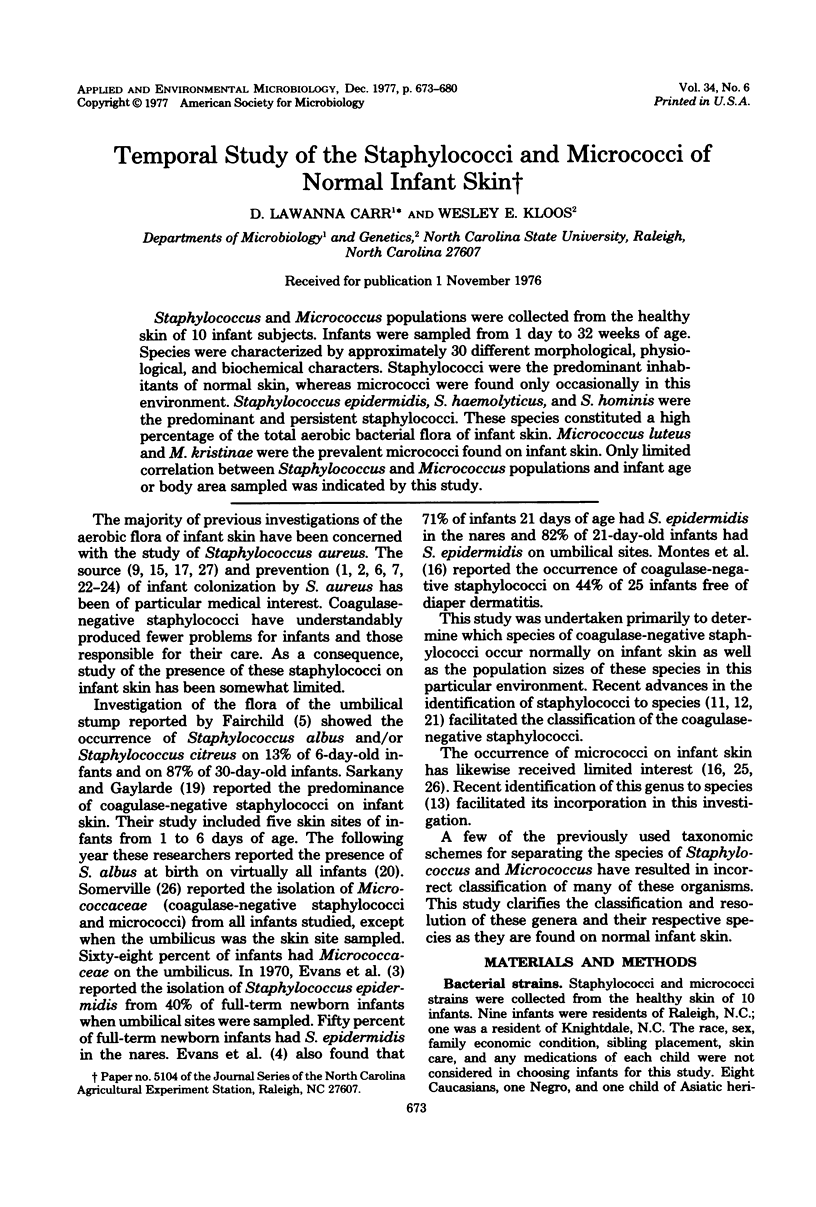
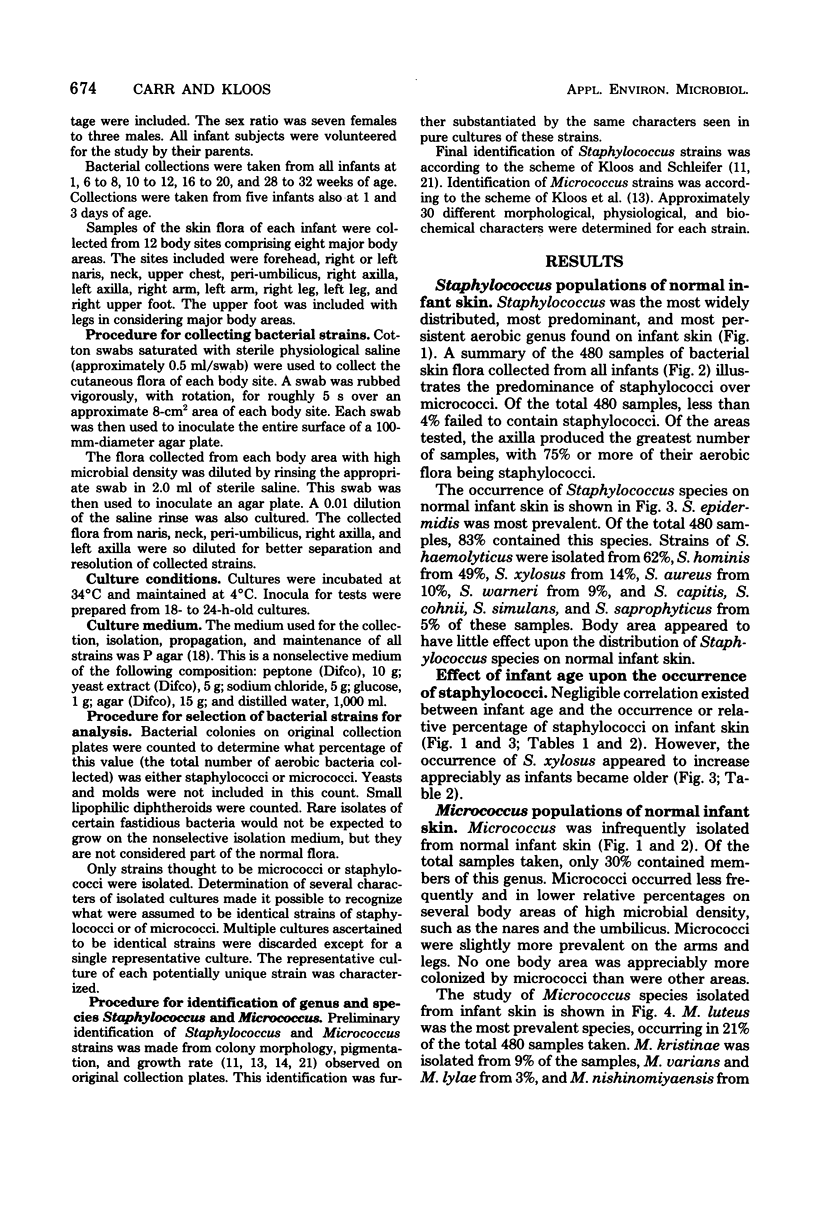
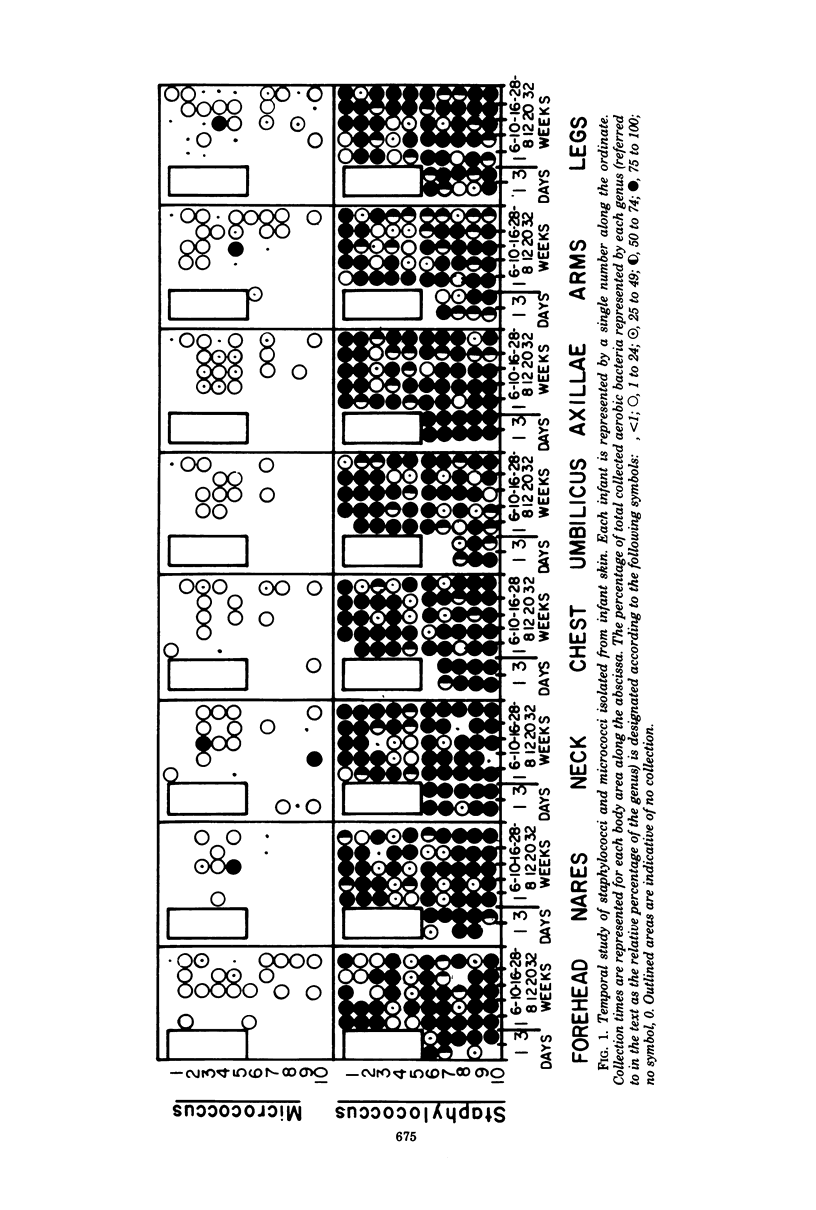

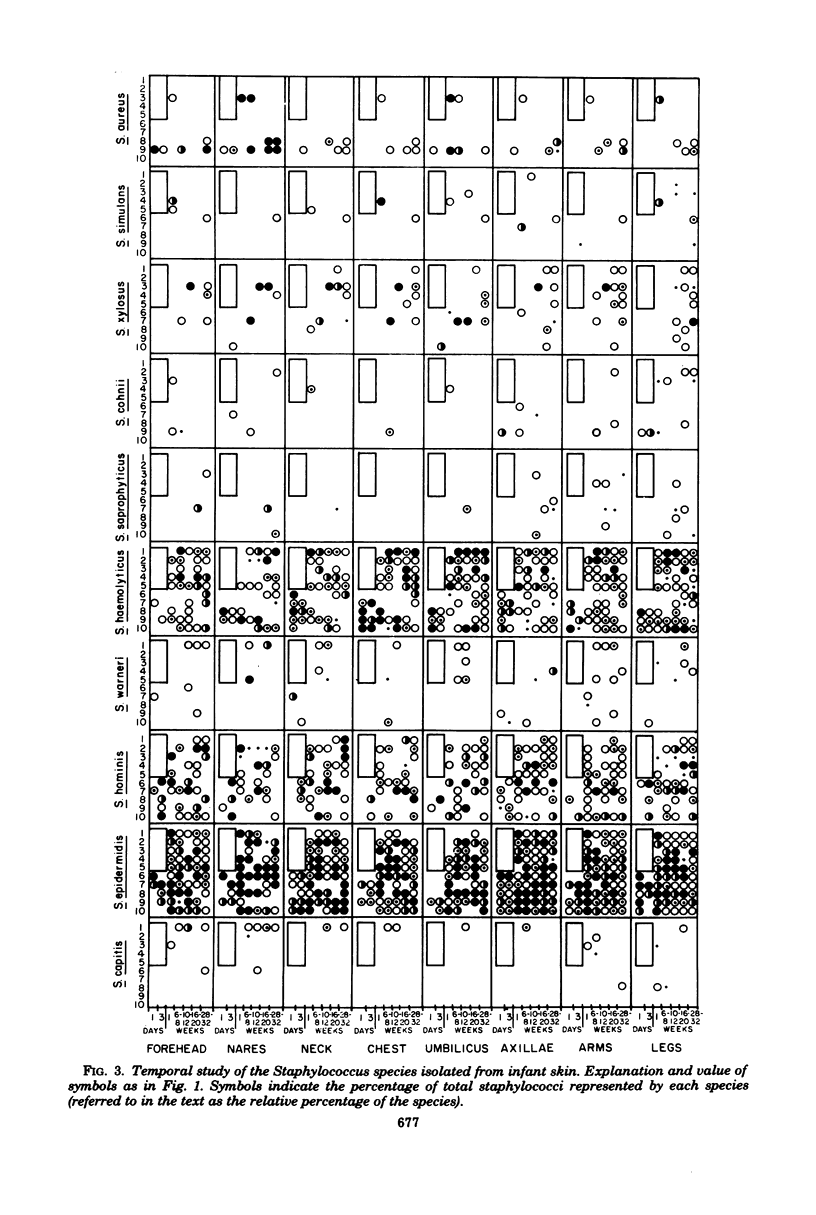
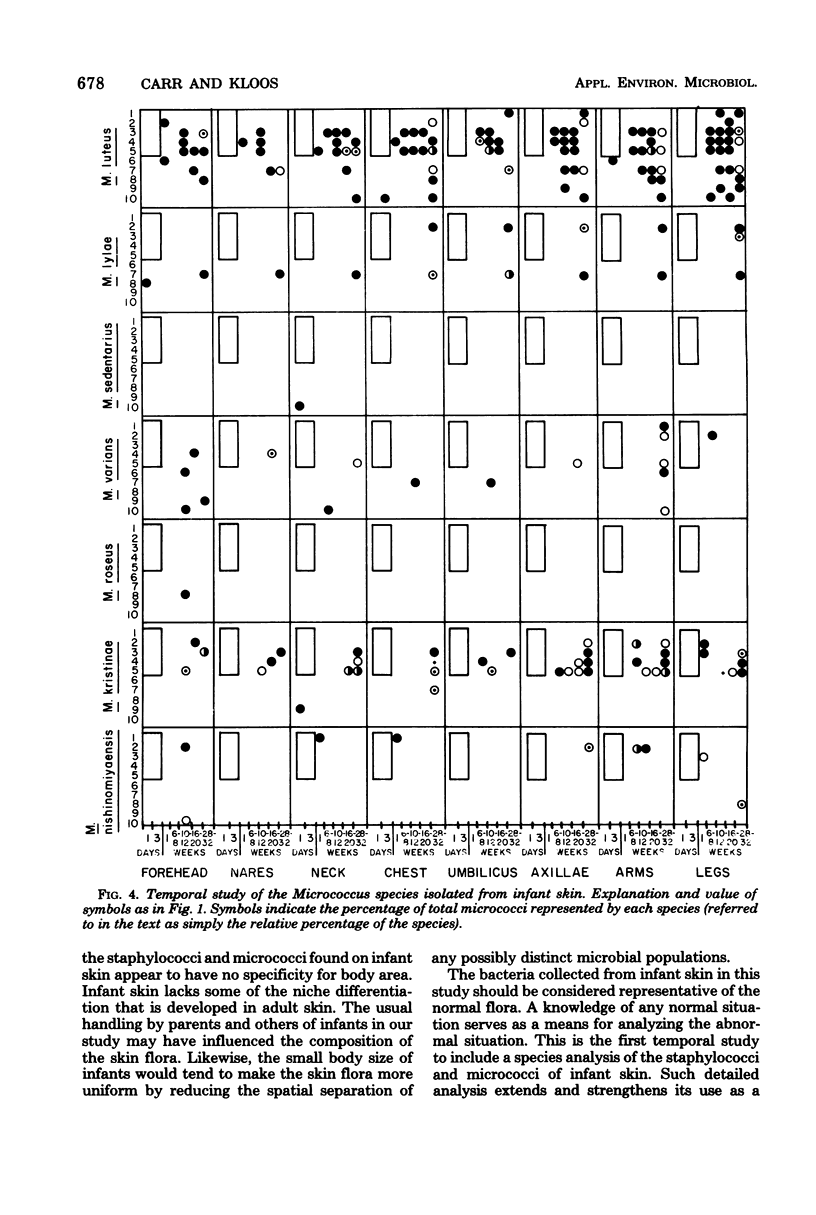
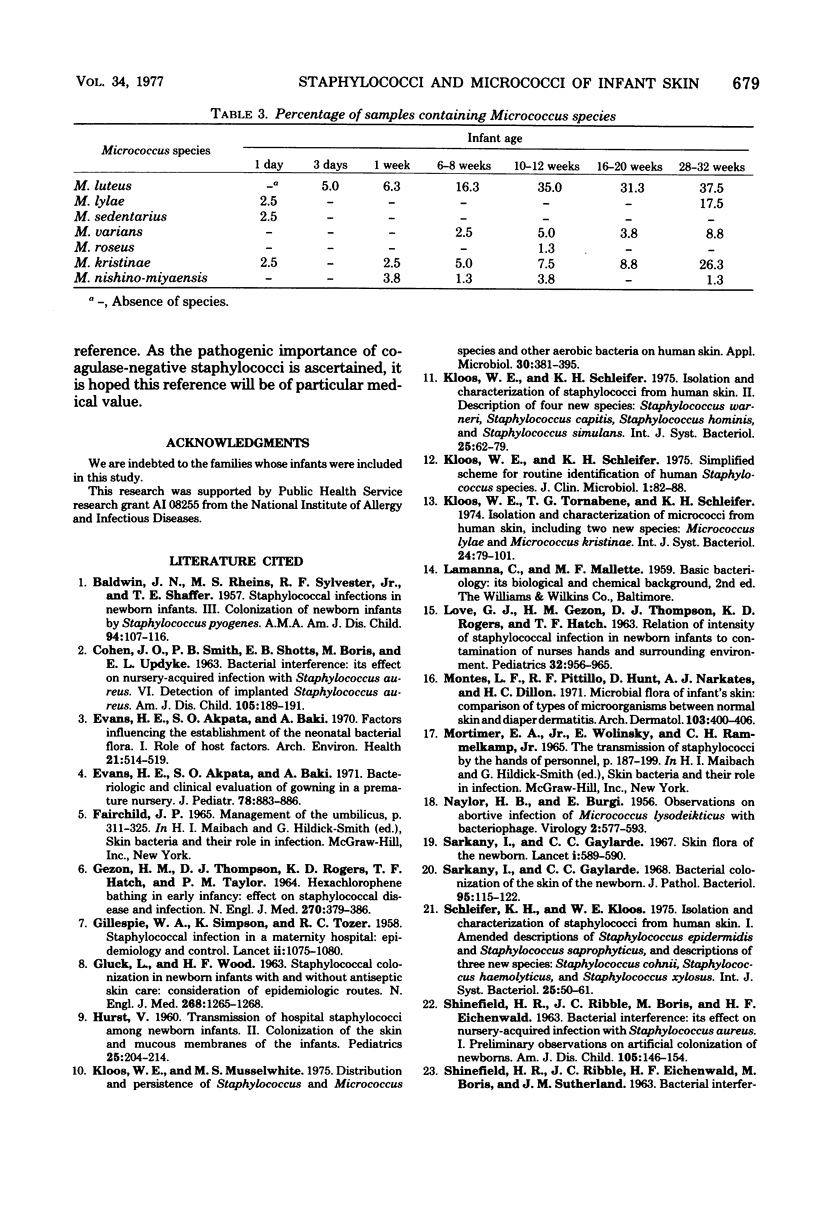
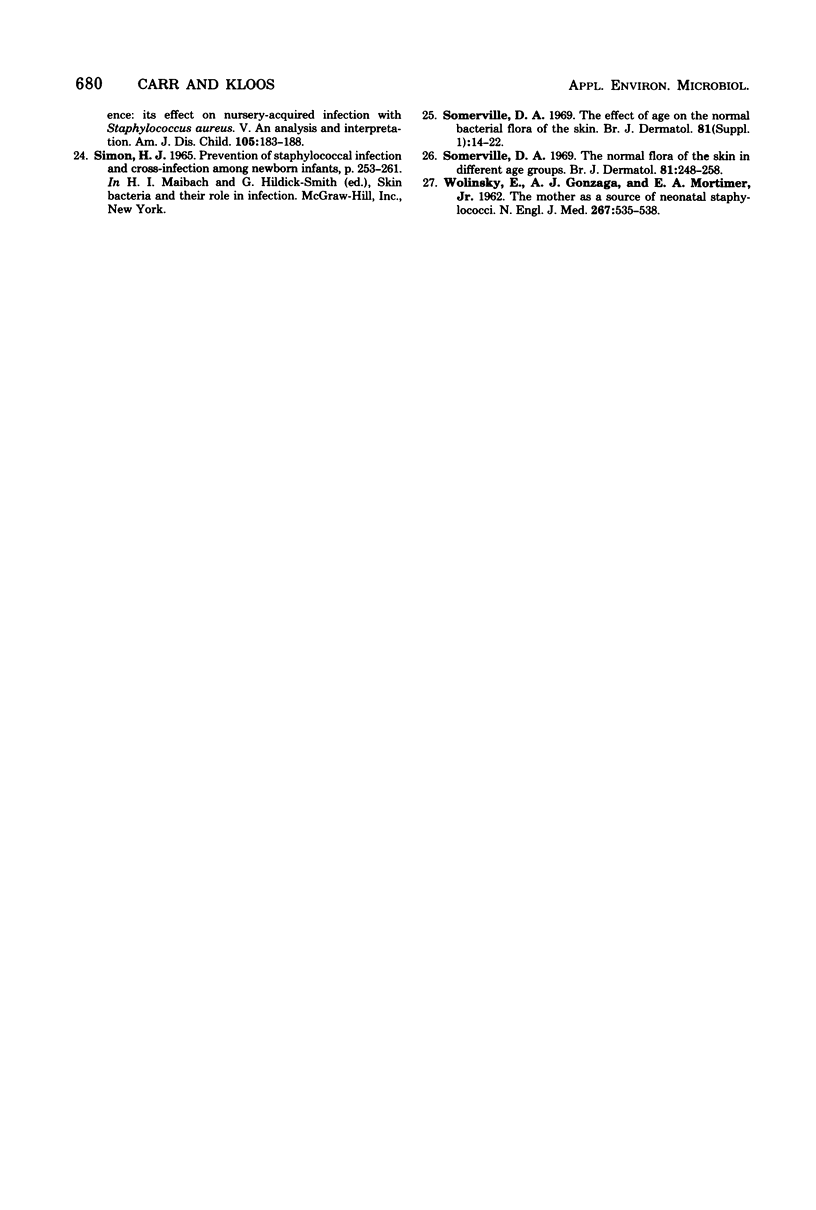
Selected References
These references are in PubMed. This may not be the complete list of references from this article.
- BALDWIN J. N., RHEINS M. S., SYLVESTER R. F., Jr, SHAFFER T. E. Staphylococcal infections in newborn infants. AMA J Dis Child. 1957 Aug;94(2):107–116. doi: 10.1001/archpedi.1957.04030030001001. [DOI] [PubMed] [Google Scholar]
- BURGI E., NAYLOR H. B. Observations on abortive infection of Micrococcus lysodeikticus with bacteriophage. Virology. 1956 Oct;2(5):577–593. doi: 10.1016/0042-6822(56)90039-3. [DOI] [PubMed] [Google Scholar]
- Evans H. E., Akpata S. O., Baki A., Behrman R. E. Bacteriologic and clinical evaluation of gowning in a premature nursery. J Pediatr. 1971 May;78(5):883–886. doi: 10.1016/s0022-3476(71)80370-0. [DOI] [PubMed] [Google Scholar]
- Evans H. E., Akpata S. O., Baki A. Factors influencing the establishment of the neonatal bacterial flora. I. The role of host factors. Arch Environ Health. 1970 Oct;21(4):514–519. doi: 10.1080/00039896.1970.10667281. [DOI] [PubMed] [Google Scholar]
- GEZON H. M., THOMPSON D. J., ROGERS K. D., HATCH T. F., TAYLOR P. M. HEXACHLOROPHENE BATHING IN EARLY INFANCY. EFFECT ON STAPHYLOCOCCAL DISEASE AND INFECTION. N Engl J Med. 1964 Feb 20;270:379–386. doi: 10.1056/NEJM196402202700801. [DOI] [PubMed] [Google Scholar]
- GILLESPIE W. A., SIMPSON K., TOZER R. C. Staphylococcal infection in a maternity hospital; epidemiology and control. Lancet. 1958 Nov 22;2(7056):1075–1080. doi: 10.1016/s0140-6736(58)92462-0. [DOI] [PubMed] [Google Scholar]
- GLUCK L., WOOD H. F. Staphylococcal colonization in newborn infants with and without antiseptic skin care. A consideration of epidemiologic routes. N Engl J Med. 1963 Jun 6;268:1265–1268. doi: 10.1056/NEJM196306062682303. [DOI] [PubMed] [Google Scholar]
- HURST V. Transmission of hospital staphylococci among newborn infants. II. Colonization of the skin and mucous membranes of the infants. Pediatrics. 1960 Feb;25:204–214. [PubMed] [Google Scholar]
- Kloos W. E., Musselwhite M. S. Distribution and persistence of Staphylococcus and Micrococcus species and other aerobic bacteria on human skin. Appl Microbiol. 1975 Sep;30(3):381–385. doi: 10.1128/am.30.3.381-395.1975. [DOI] [PMC free article] [PubMed] [Google Scholar]
- Kloos W. E., Schleifer K. H. Simplified scheme for routine identification of human Staphylococcus species. J Clin Microbiol. 1975 Jan;1(1):82–88. doi: 10.1128/jcm.1.1.82-88.1975. [DOI] [PMC free article] [PubMed] [Google Scholar]
- LOVE G. J., GEZONHMTHOMPSON D. J., ROGERS K. D., HATCH T. F. RELATION OF INTENSITY OF STAPHYLOCOCCAL INFECTION IN NEWBORN INFANTS TO CONTAMINATION OF NURSES' HANDS AND SURROUNDING ENVIRONMENT. Pediatrics. 1963 Dec;32:956–965. [PubMed] [Google Scholar]
- MAYER F. E., DOYLE E. F., HERRERA L., BROWNELL K. D. Declining severity of first attack of rheumatic fever. Am J Dis Child. 1963 Feb;105:146–152. doi: 10.1001/archpedi.1963.02080040148004. [DOI] [PubMed] [Google Scholar]
- Montes L. F., Pittillo R. F., Hunt D., Narkates A. J., Dillon H. C. Microbial flora of infant's skin. Comparison of types of microorganisms between normal skin and diaper dermatitis. Arch Dermatol. 1971 Apr;103(4):400–406. doi: 10.1001/archderm.103.4.400. [DOI] [PubMed] [Google Scholar]
- Sarkany I., Gaylarde C. C. Bacterial colonisation of the skin of the newborn. J Pathol Bacteriol. 1968 Jan;95(1):115–122. doi: 10.1002/path.1700950113. [DOI] [PubMed] [Google Scholar]
- Sarkany I., Gaylarde C. C. Skin flora of the newborn. Lancet. 1967 Mar 18;1(7490):589–590. doi: 10.1016/s0140-6736(67)90441-2. [DOI] [PubMed] [Google Scholar]
- Somerville D. A. The effect of age on the normal bacterial flora of the skin. Br J Dermatol. 1969;81(Suppl):14+–14+. [PubMed] [Google Scholar]
- Somerville D. A. The normal flora of the skin in different age groups. Br J Dermatol. 1969 Apr;81(4):248–258. doi: 10.1111/j.1365-2133.1969.tb13976.x. [DOI] [PubMed] [Google Scholar]
- WOLINSKY E., GONZAGA A. J., MORTIMER E. A., Jr The mother as a source of neonatal staphylococci. N Engl J Med. 1962 Sep 13;267:535–538. doi: 10.1056/NEJM196209132671103. [DOI] [PubMed] [Google Scholar]


